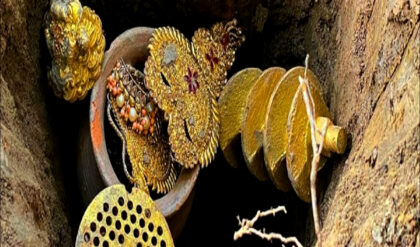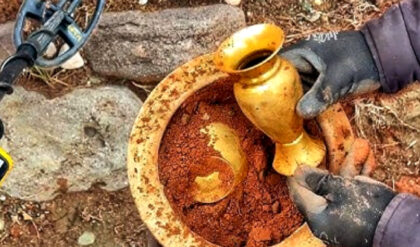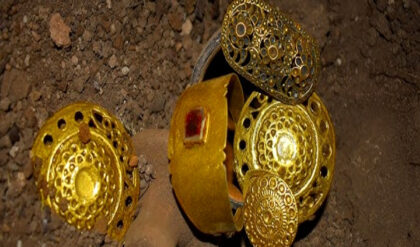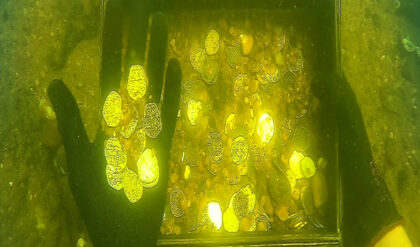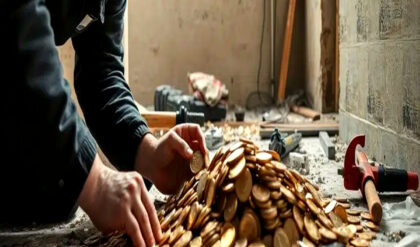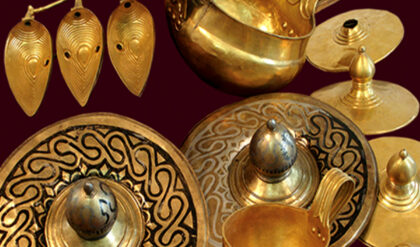The beginning of the great funerary mausoleum of Ying Zheng, who later became Qin Shi Huang, first emperor of China, dates back to when he was a 13-year-old boy king. Their ambitious construction project began in what is now known as Lintong district, Xi’an, within China’s Shaanxi province. The design of the tomb and the 38-square-mile necropolis surrounding it reflected the Emperor’s growing influence, wealth, and growing obsession with immortality, promising an eternal empire that mirrored his earthly reign.

A look at Qin Shi Huang’s past:
China was under tumultuous conditions during 260 BC. C., marked by the Warring States Period that saw the struggle for dominance between seven states. However, it was Qin, under King Zhuangxiang, who emerged as the most potent power. King Zhuangxiang’s brief reign, which lasted only three years, did not allow him to become the first emperor of China. Instead, the mantle was passed to his young son, Ying Zheng.

From an early age, Ying Zheng exhibited unwavering determination and bravery that eventually led him to overthrow his regent at just 21 years old. Despite multiple assassination attempts, Ying Zheng’s military campaigns were victorious. By 221 BC. C., he had unified the fragmented Chinese states into an empire, earning himself the title ‘Qin Shi Huangdi’, symbolizing his divine and divine stature.
The Majesty of Qin Shi Huang’s Tomb:

Planning for the Emperor’s burial site began immediately after his coronation in 246 BC. Qin Shi Huang’s growing wealth, power, and obsession with the afterlife prompted the construction of his colossal mausoleum. However, his fear of death drove him to relentlessly search for an elixir of life, which ultimately led to his death by consuming mercury, a substance he believed would grant him immortality.
The Emperor’s Tomb, an architectural marvel, was designed to imitate the Qin capital, Xianyang. Housing an inner and outer city, the mausoleum was built to face east and is believed to lie beneath a mound within the inner city. Historical accounts suggest that the tomb was built by hundreds of thousands of workers, including slaves, who met a tragic fate upon completion.
An afterlife empire within the mausoleum grounds:
Archaeological discoveries reveal that Qin Shi Huang imagined his afterlife to emulate his earthly life in meticulous detail. The grandeur of his imperial court was reproduced, with life-size terracotta figures of musicians, acrobats, attendants and government officials ready to serve him in death as they did in life.

Evidence of a royal park, complete with bronze representations of swans, ducks and cranes, and a stable containing skeletons of horses and their terracotta caretakers, bear further testimony to the extravagance of their imagined afterlife. Additionally, archaeologists have unearthed the skeletal remains of young women, believed to be the Emperor’s concubines, buried within the mausoleum complex.
Revealing the Terracotta Army:
One of the most extraordinary aspects of the Qin Shi Huang Mausoleum is the Terracotta Army, discovered about a mile east of the tomb by local villagers in 1974. It consists of around 8,099 terracotta statues of warriors, weapons and horses, These figures were designed to protect the Emperor in the afterlife. Each statue displays detailed craftsmanship, with different expressions and features believed to be inspired by real warriors from Qin Shi Huang’s army.

The Terracotta Army is unprecedented in Chinese history, leading scholars to suggest possible Hellenistic Greek influences on the craftsmen. Today, these statues stand in their original halls within a museum dedicated to their conservation.
The Qin Shi Huang Mausoleum, declared a UNESCO World Heritage Site in 1987, serves as a timeless testament to China’s rich history. Reflecting the grandeur of the Emperor’s life, the mausoleum offers invaluable insights into the sculpture, engineering, rituals, military strategies and deeply held beliefs of a civilization more than 2,000 years ago.
